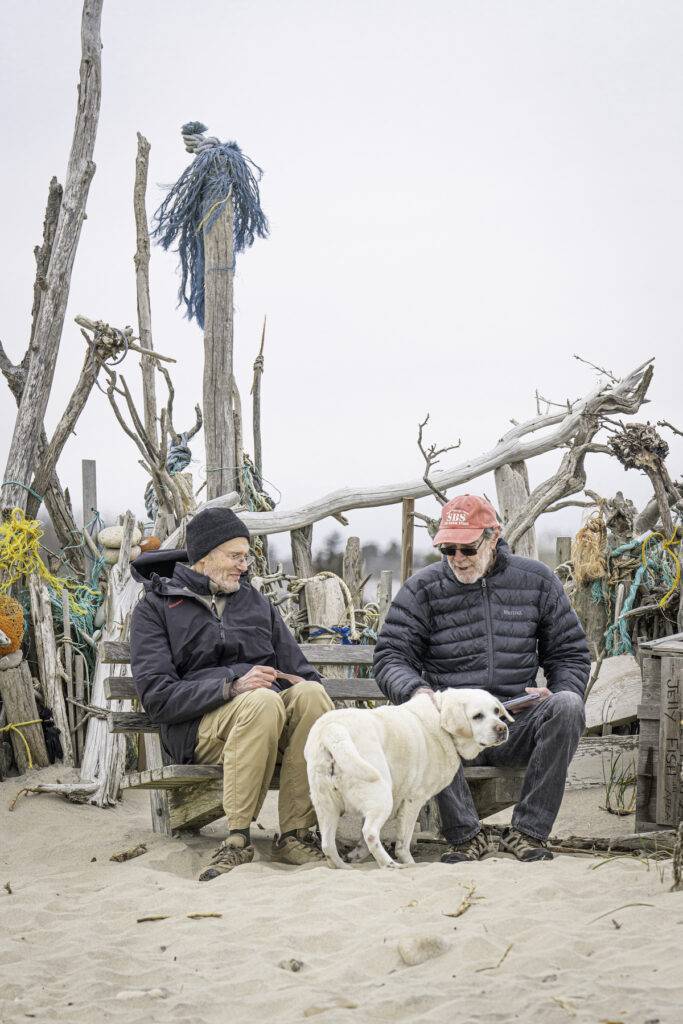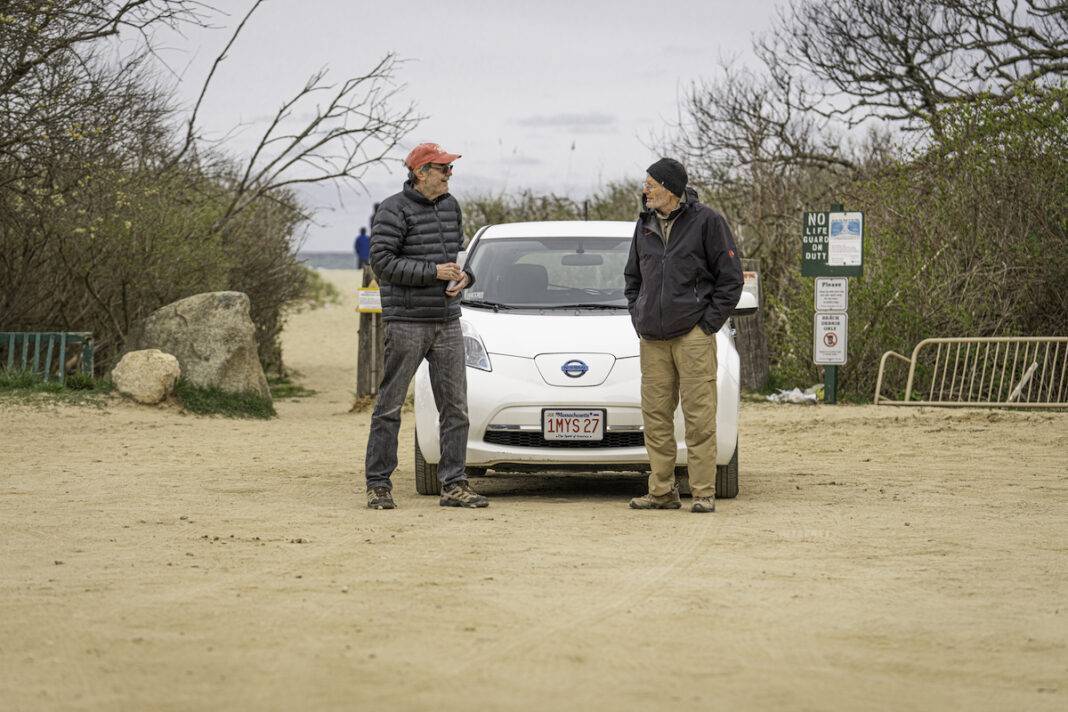For this month’s ‘Cruising with Currier,’ I went for a ride with Jed Katch of Chilmark. Katch came to the Island with his wife, Jane, about eight years ago and was hired by the Chilmark School as an enrichment teacher where he could work with kids who needed extra help over and above what was being taught in school, especially in math, the sciences, or languages. He picked up German when he lived in Germany teaching at a U.S. Army Base and he picked up Spanish by talking to kids on the streets of Chicago. “Kids wanted extra help in various subjects and I was glad I could provide it,” Katch said.
Katch is involved with various environmental causes both on the Island and off. Locally he’s been involved with The Island Climate Action Network (ICAN) and the Chilmark Energy Committee. He’s also involved with Biodiversity for a Livable Climate (https://bio4climate.org) located in Cambridge and the D.C. area. He’s the only representative on the Island and he credits the group with providing him with his recent education on climate issues.
Katch drives a Nissan Leaf, which he bought new in 2016 and he is very happy with the car. “It just makes so much sense,” he said, “both for the environment and economically. I was an early adapter to electric cars back in 2016 so there weren’t that many other cars around to compare mine to.” Katch’s 2016 Leaf gets about 110 miles per charge, which is fine on the Island, but for driving off-Island he has a non-electric 2021 Honda CR-V. But as EVs become more efficient, charges of well over 200 miles are not uncommon. Charging stations are becoming even more widespread throughout the country. Tesla plans to open up their charging stations to non-Teslas as well. And so Katch can see himself switching over to a new EV sometime soon, a car he can use both on and off-Island. “Eventually I don’t want to drive a fuel burning car at all,” he said.
“I see this as a pivotal moment for EV manufacturers like Subaru, GM, and Honda who, along with many other brands, plan to switch over to electric in the near future,” Jed Katch says.
When I asked Katch if the cost of electricity ever outweighed the savings of driving an electric vehicle, he told me that they have solar panels at their home so they’re not paying a lot for electricity at all. “In fact, we usually make more electricity than we use,” he said. “I see this as a pivotal moment for EV manufacturers like Subaru, GM, and Honda who, along with many other brands, plan to switch over to electric in the near future.”
When I asked Katch if he wanted to go for a “Cruise,” he jumped at the chance and said that a typical cruise for him on the Island might be the several mile jaunt he takes most every day from his home off Tea Lane in Chilmark to Lucy Vincent Beach, where he takes his white lab, also named Lucy, for a run. And that’s exactly what we did on a brisk and overcast afternoon in April where there couldn’t have been more than a half-dozen people and a couple of other dogs on the beach.
We went for an invigorating walk, which gave Katch a chance to expound, not only on his thoughts about EVs but on his thoughts on global warming and what might be done about it.

Katch is a huge proponent of electric vehicles but while walking together on the beach we talked about how they are just a part of the big picture.
“We’ve been treating the Earth as if it were something to take from, and not something to work with,” Katch said. “We have to understand how interconnected we are with nature.”
Katch points out that there are myriad ways we can work with nature and looks to the work of Suzanne Simard, a professor of forest ecology at the University of British Columbia, for some innovative examples. In her book, “Finding The Mother Tree: Discovering the Wisdom of the Forest,” Simard writes that the trees in a forest are often linked to each other via an older tree she calls a “Mother Tree” that uses a special kind of fungus — called a mycorrhizal fungus — to reach out and communicate with other trees. What’s more, she writes, we can use this fungus to identify the Mother Trees so we’ll know not to destroy them, which can help to perpetuate the health of the forest.
This is something we’ve known for centuries, Katch says, “It was common knowledge to Indigenous people in North America.” The point of talking about such things as Mother Trees is to encourage people to seek out new and alternative ways to combat global warming, no matter how on the fringe the ideas may, at first, seem to be.
“Our younger generation realizes we’ve got to do something about the climate because our lives literally depend on it,” Katch says. “And there’s a willingness to do whatever it takes to address the problem.”
“A friend of mine once told me how impressed he was that so many students were engaged in the Civil Rights Movement in the sixties,” Katch says, “and he regretted that we don’t have a cause like that going on now, and I said ‘We certainly do’. Our younger generation realizes we’ve got to do something about the climate because our lives literally depend on it,” Katch says. “And there’s a willingness to do whatever it takes to address the problem.”
“If that means driving electric vehicles … or communicating with Mother Trees, any and all solutions are on the table. And that,” Katch says, “gives me hope.”

